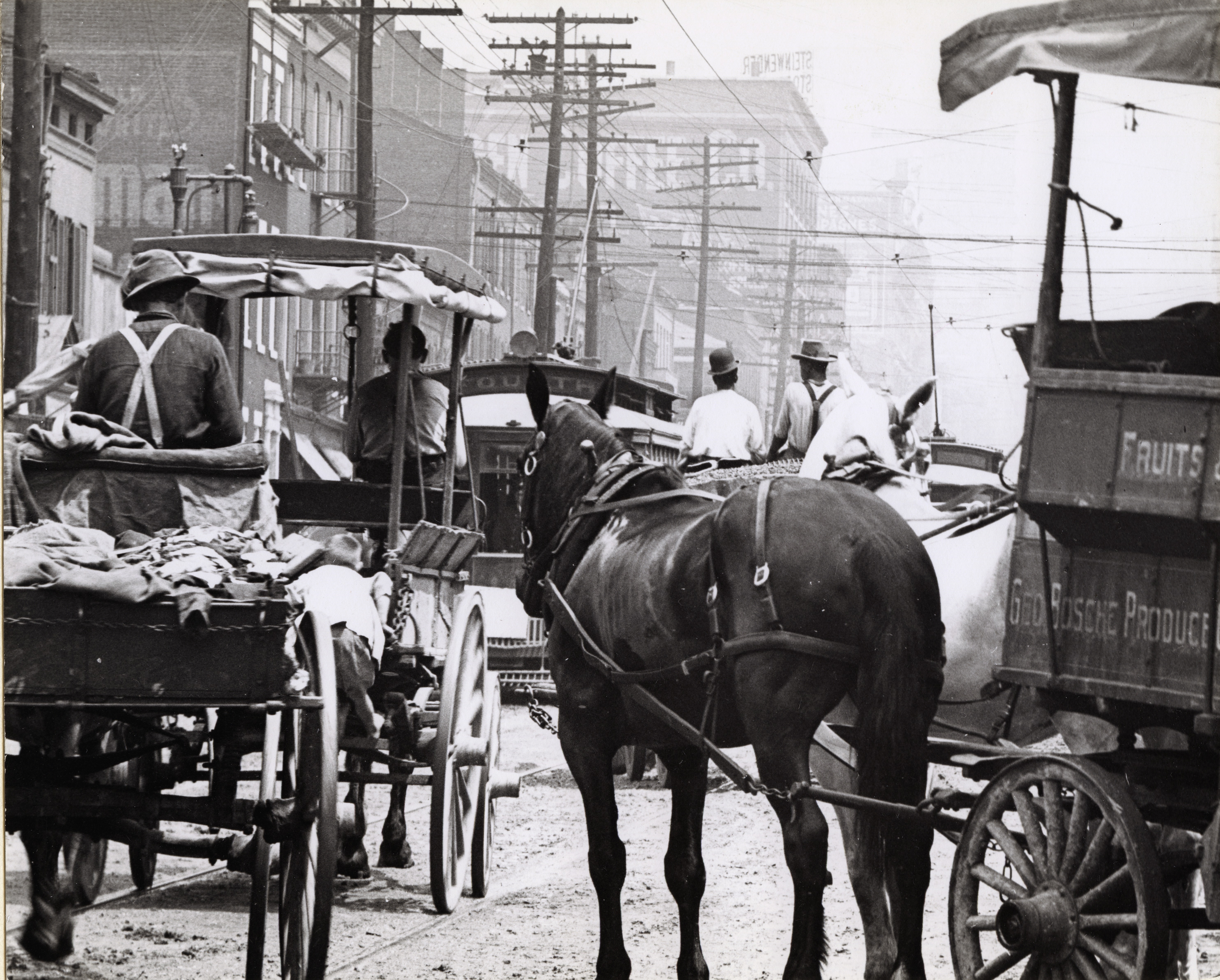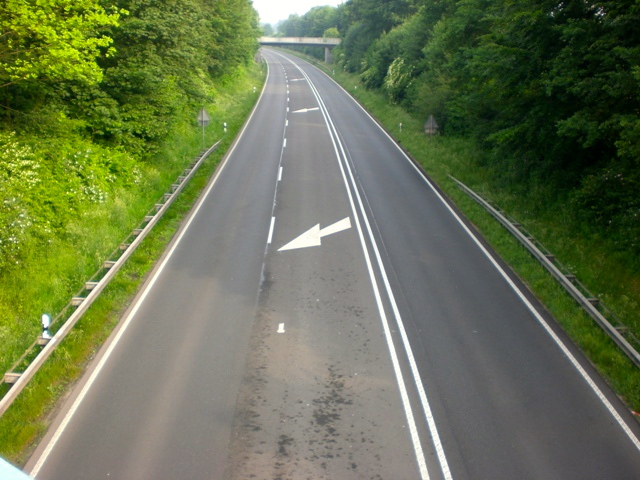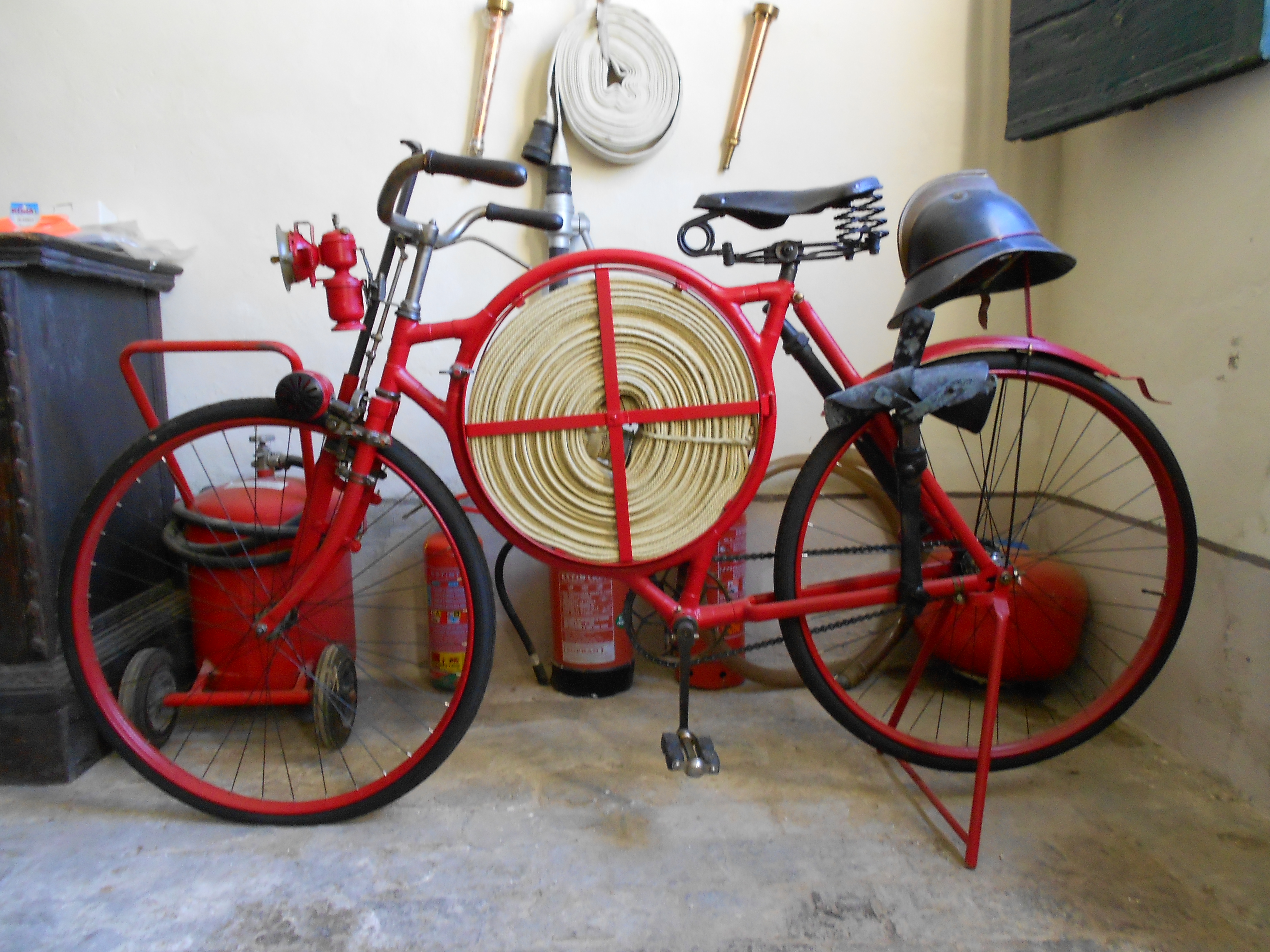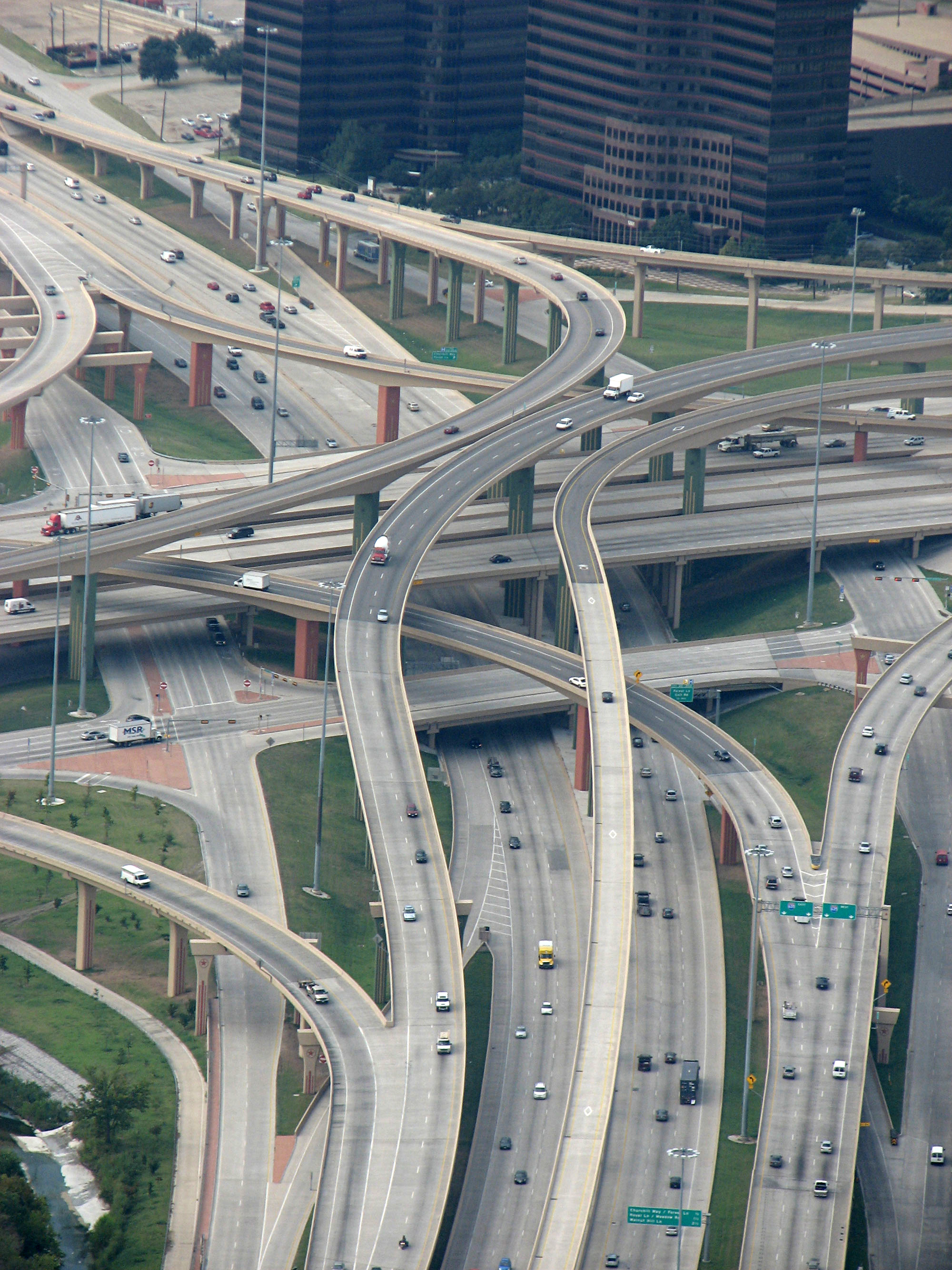|
Overtake
Overtaking or passing is the act of one vehicle going past another slower moving vehicle, travelling in the same direction, on a road. The lane used for overtaking another vehicle is often a passing lane farther from the road shoulder, which is to the left in places that drive on the right and to the right in places that drive on the left. Rules of overtaking In English-speaking countries On a single-carriageway/undivided-highway road, the lane used for overtaking is often the same lane that is used by oncoming traffic. An overtaking vehicle must be able to see clearly ahead of them for the entire overtaking manoeuvre plus a margin of error. For example, in New Zealand it's instructed in the Road Code that an overtaking driver must be able to see at least of clear road in front of them as they finish the passing manoeuvre. In the UK, guidance for passing and overtaking is given in rules 162-169 of the Highway Code. In some jurisdictions, the "overtaking zone" is indicated ... [...More Info...] [...Related Items...] OR: [Wikipedia] [Google] [Baidu] |
Traffic
Traffic is the movement of vehicles and pedestrians along land routes. Traffic laws govern and regulate traffic, while rules of the road include traffic laws and informal rules that may have developed over time to facilitate the orderly and timely flow of traffic. Organized traffic generally has well-established priorities, lanes, right-of-way, and traffic control at intersections. ( International Regulations for Preventing Collisions at Sea govern the oceans and influence some laws for navigating domestic waters.) Traffic is formally organized in many jurisdictions, with marked lanes, junctions, intersections, interchanges, traffic signals, cones, or signs. Traffic is often classified by type: heavy motor vehicle (e.g., car, truck), other vehicle (e.g., moped, bicycle), and pedestrian. Different classes may share speed limits and easement, or may be segregated. Some jurisdictions may have very detailed and complex rules of the road while others rely more on drive ... [...More Info...] [...Related Items...] OR: [Wikipedia] [Google] [Baidu] |
Passing Lane
A passing lane (North American English), overtaking lane (English outside North America) is a lane on a multi-lane highway or motorway closest to the median of the road (the central reservation) used for passing vehicles in other lanes. (North American usage also calls the higher-speed lane nearest the median the "inside lane" but in the United Kingdom this is the "outside lane".) Countries with right-hand traffic put the passing lane on the left; those with left-hand traffic put the passing lane on the right. Motorways typically have passing lanes along their entire length, but other roads might only have passing lanes for certain segments, depending on design specifications typically related to available space, funding, and traffic levels. A 2+1 road alternates the passing lane between directions every few kilometers/miles. The passing lane is commonly referred to as the fast lane, and the lane closest to the shoulder the slow lane. Some jurisdictions, particularly on limited-ac ... [...More Info...] [...Related Items...] OR: [Wikipedia] [Google] [Baidu] |
2+1 Road
2+1 road is a specific category of three-lane road, consisting of two lanes in one direction and one lane in the other, alternating every few kilometres, and usually separated with a steel cable barrier. The second lane allows faster-moving traffic to overtake slower vehicles at regular intervals. Traditional roads of at least width can be converted to 2+1 roads and reach near-motorway safety levels at a much lower cost than an actual conversion to motorway or dual carriageway. Sometimes, during freeway reconstruction, a barrier transfer machine will be used on one half of the freeway while the other is being reconstructed. By country Canada In 2023 the province of Ontario announced an assessment and design contract was awarded to convert Ontario Highway 11, Highway 11 north of North_Bay,_Ontario, North Bay to a 2+1 design; once the design has been finalized there will be a invitation to tender, tender to build it. Estonia The construction of 2+1 roads in Estonia first s ... [...More Info...] [...Related Items...] OR: [Wikipedia] [Google] [Baidu] |
Road Shoulder
A shoulder (American English), hard shoulder (British English) or breakdown lane (Australian English) is an emergency stopping lane by the road verge, verge on the outer side of a road or motorway. Many wider freeways, or Limited-access road, expressways elsewhere have shoulders on both sides of each directional carriageway—in the median, as well as at the outer edges of the road, for additional safety. Shoulders are not intended for use by through traffic, although there are exceptions. Purpose Shoulders have multiple uses, including: * Emergency vehicles such as ambulances, fire trucks and police cars may use the shoulder to bypass traffic congestion in some countries. * In the event of an emergency or Breakdown (vehicle), breakdown, a motorist can pull into the shoulder to get out of the flow of traffic and obtain a greater degree of safety. * Active traffic management, used on busy multi-lane roads, may allow 'hard shoulder running' by general traffic at reduced speeds duri ... [...More Info...] [...Related Items...] OR: [Wikipedia] [Google] [Baidu] |
Motorway
A controlled-access highway is a type of highway that has been designed for high-speed vehicular traffic, with all traffic flow—ingress and egress—regulated. Common English terms are freeway, motorway, and expressway. Other similar terms include ''wikt:throughway, throughway'' or ''thruway'' and ''parkway''. Some of these may be limited-access highways, although this term can also refer to a class of highways with somewhat less isolation from other traffic. In countries following the Vienna Convention on Road Signs and Signals, Vienna convention, the motorway qualification implies that walking and parking are forbidden. A fully controlled-access highway provides an unhindered flow of traffic, with no traffic signals, Intersection (road), intersections or frontage, property access. They are free of any at-grade intersection, at-grade crossings with other roads, railways, or pedestrian paths, which are instead carried by overpasses and underpasses. Entrances and exits to t ... [...More Info...] [...Related Items...] OR: [Wikipedia] [Google] [Baidu] |
Hard Shoulder
A shoulder (American English), hard shoulder (British English) or breakdown lane (Australian English) is an emergency stopping lane by the verge on the outer side of a road or motorway. Many wider freeways, or expressways elsewhere have shoulders on both sides of each directional carriageway—in the median, as well as at the outer edges of the road, for additional safety. Shoulders are not intended for use by through traffic, although there are exceptions. Purpose Shoulders have multiple uses, including: * Emergency vehicles such as ambulances, fire trucks and police cars may use the shoulder to bypass traffic congestion in some countries. * In the event of an emergency or breakdown, a motorist can pull into the shoulder to get out of the flow of traffic and obtain a greater degree of safety. * Active traffic management, used on busy multi-lane roads, may allow 'hard shoulder running' by general traffic at reduced speeds during periods of high traffic volumes. * In some pla ... [...More Info...] [...Related Items...] OR: [Wikipedia] [Google] [Baidu] |
Bicycle Demonstration With Pool Noodles
A bicycle, also called a pedal cycle, bike, push-bike or cycle, is a human-powered transport, human-powered or motorized bicycle, motor-assisted, bicycle pedal, pedal-driven, single-track vehicle, with two bicycle wheel, wheels attached to a bicycle frame, frame, one behind the other. A is called a cyclist, or bicyclist. Bicycles were introduced in the 19th century in Europe. By the early 21st century there were more than 1 billion bicycles. There are many more bicycles than cars. Bicycles are the principal Mode of transport, means of transport in many regions. They also provide a popular form of recreation, and have been adapted for use as Toy, children's toys. Bicycles are used for Physical fitness, fitness, Military bicycle, military and Police bicycle, police applications, Bicycle messenger, courier services, Cycle sport, bicycle racing, and artistic cycling. The basic shape and configuration of a typical Safety bicycle, upright or "safety" bicycle, has changed lit ... [...More Info...] [...Related Items...] OR: [Wikipedia] [Google] [Baidu] |
Slip Road
In the field of road transport, an interchange (American English) or a grade-separated junction (British English) is a road junction that uses grade separations to allow for the movement of traffic between two or more roadways or highways, using a system of interconnecting roadways to permit traffic on at least one of the routes to pass through the junction without interruption from crossing traffic streams. It differs from a standard intersection, where roads cross at grade. Interchanges are almost always used when at least one road is a controlled-access highway (freeway) or a limited-access highway (expressway), though they are sometimes used at junctions between surface streets. Terminology ''Note:'' The descriptions of interchanges apply to countries where vehicles drive on the right side of the road. For left-side driving, the layout of junctions is mirrored. Both North American (NA) and British (UK) terminology is included. ; Freeway junction, highway interchang ... [...More Info...] [...Related Items...] OR: [Wikipedia] [Google] [Baidu] |
High-occupancy Toll Lane
A high-occupancy toll lane (HOT lane) is a type of traffic lane or roadway that is available to high-occupancy vehicles and other exempt vehicles without charge; other vehicles are required to pay a road pricing, variable fee that is adjusted in response to demand. Unlike toll roads, drivers have an option to use general purpose lanes, on which a fee is not charged. Express toll lanes, which are less common, operate along similar lines, but do not exempt high-occupancy vehicles. History The HOT concept developed from high-occupancy vehicle lane (HOV) systems in order to increase use of the available capacity, as it was found that HOV lanes were underutilized compared to general purpose lanes. Most implementations are currently in the United States. The first practical implementation was California's formerly private toll 91 Express Lanes, in Orange County, California, in 1995, followed in 1996 by Interstate 15 in California, Interstate 15 in northern San Diego. According to the ... [...More Info...] [...Related Items...] OR: [Wikipedia] [Google] [Baidu] |
HOV Lane
A high-occupancy vehicle lane (also known as an HOV lane, carpool lane, diamond lane, 2+ lane, and transit lane or T2 or T3 lanes) is a restricted traffic lane reserved for the exclusive use of vehicles with a driver and at least one passenger, including carpools, vanpools, and transit buses. These restrictions may be only imposed during peak travel times or may apply at all times. There are different types of lanes: temporary or permanent lanes with concrete barriers, two-directional or reversible lanes, and exclusive, concurrent, or contraflow lanes working in peak periods. The normal minimum occupancy level is two or three occupants. Many jurisdictions exempt other vehicles, including motorcycles, charter buses, emergency and law enforcement vehicles, low-emission and other green vehicles, and/or single-occupancy vehicles paying a toll. HOV lanes are normally introduced to increase average vehicle occupancy and persons traveling with the goal of reducing traffic congestio ... [...More Info...] [...Related Items...] OR: [Wikipedia] [Google] [Baidu] |
Sweden
Sweden, formally the Kingdom of Sweden, is a Nordic countries, Nordic country located on the Scandinavian Peninsula in Northern Europe. It borders Norway to the west and north, and Finland to the east. At , Sweden is the largest Nordic country by both area and population, and is the List of European countries by area, fifth-largest country in Europe. Its capital and largest city is Stockholm. Sweden has a population of 10.6 million, and a low population density of ; 88% of Swedes reside in urban areas. They are mostly in the central and southern half of the country. Sweden's urban areas together cover 1.5% of its land area. Sweden has a diverse Climate of Sweden, climate owing to the length of the country, which ranges from 55th parallel north, 55°N to 69th parallel north, 69°N. Sweden has been inhabited since Prehistoric Sweden, prehistoric times around 12,000 BC. The inhabitants emerged as the Geats () and Swedes (tribe), Swedes (), who formed part of the sea-faring peopl ... [...More Info...] [...Related Items...] OR: [Wikipedia] [Google] [Baidu] |








